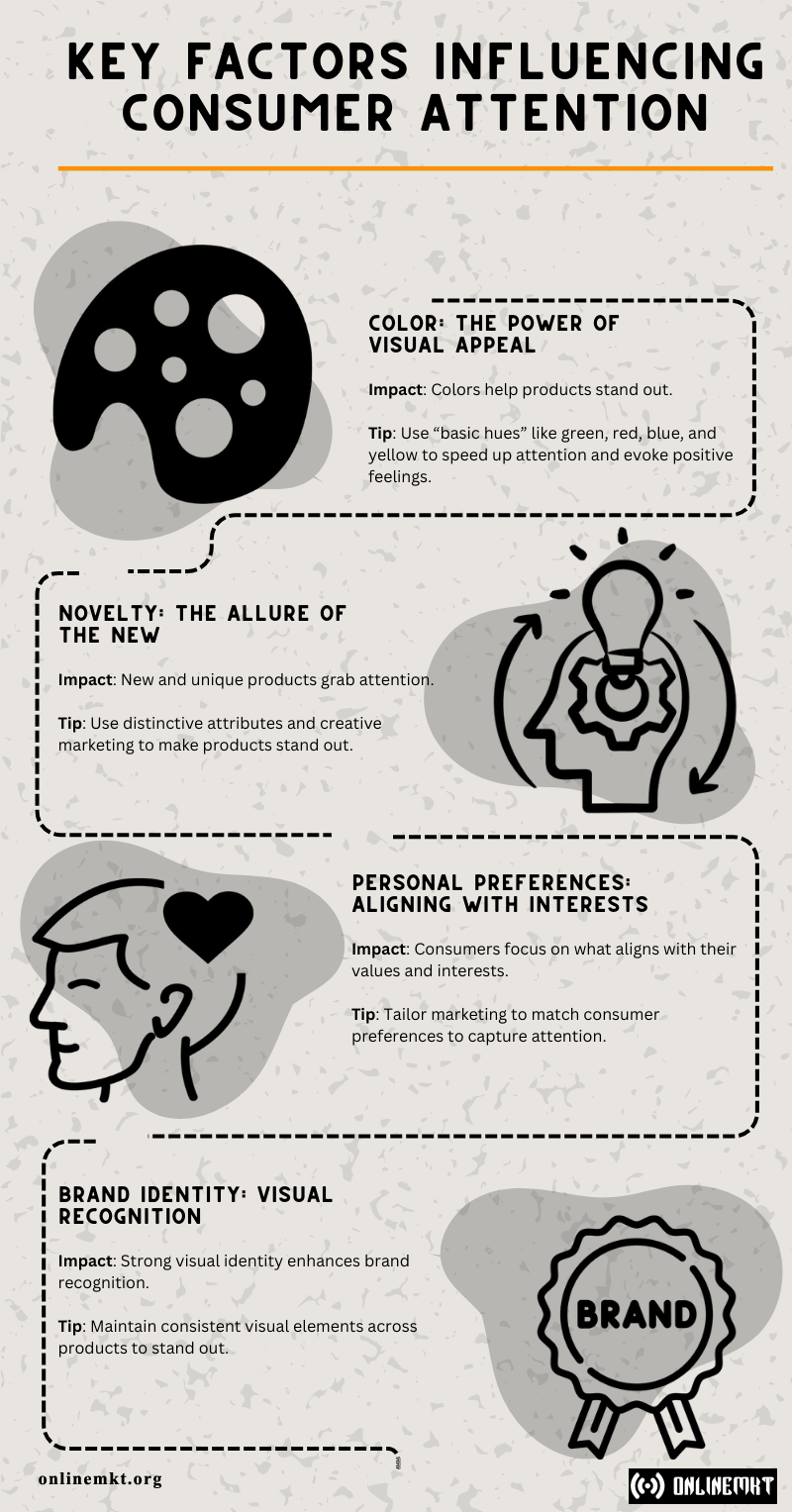What Attracts Consumers’ Attention?

In the modern age of commercialization, customers are bombarded with hundreds of messages daily. With advertisements screaming at us and social media updates clogging up timelines, getting noticed is more important than ever. But what really makes us take notice? It is not bright colors or clever slogans so much; it is about engaging with emotions and values that matter to people. When companies engage with real emotions, they cause their experiences to resonate long after initial exposure.
The rise of digital media has transformed how we interact with information. Interactive content, engaging visuals, and short videos are now essential for brands that must capture attention. Consumers are drawn to authenticity and relatability and seek a connection beyond transactions.
Let’s explore a few influences that impact consumer attention:

Color: The Power of Visual Appeal
Colors certainly have a significant role in attracting customers’ attention. Colorful items are easily captured by our pre-attentive systems, and these pop out for further attentional processing. Yet using color effectively can be challenging, especially in environments where there are many colorful displays competing for attention.
Studies indicate that “basic colors” such as green, grey, red, black, blue, orange, yellow, pink, and brown are more perceived in cluttered shopping environments. Colors can accelerate consumer attention and reduce search time, which tends to lead to positive emotions towards the products. The impact is especially potent when consumers use heuristics, or mental shortcuts, based on physical attributes.
Novelty: The Appeal of the New
New techniques are an effective method of breaking through the clutter and getting heard. New products perform extremely well in the year of launch because of their newness. Buyers are attracted to new products because they are different from other comparable products.
However, novelty fades with the passing of time, and individuals are no longer interested since the stimulus is not new anymore. This means that marketers can leverage distinctive product characteristics to command attention for a limited time only. Unique marketing initiatives can also stand out, i.e., strange and unusual promotion campaigns that leave the viewer in awe.
For instance, a US jeweler once promised to refund all Christmas season purchases if it snowed more than three inches on New Year’s Eve, resulting in a 30% increase in sales.
Personal Preferences: Aligning with Consumer Interests
Catching consumers’ attention can be challenging when they unconsciously seek information that supports their existing ideas about products and services. The signals a consumer pays attention to can change based on their initial aims and preferences.
Research shows that information congruent with one’s views or values impacts attention more than conflicting information. Different individuals find different items attractive based on their preferences. People with particular interests seek relevant data about those interests, ignoring information about topics they don’t care about.
Marketers try their best to communicate the superiority of their product compared to other brands, as they are aware that consumers give attention to things of specific interest. Even highly colorful or action-packed campaigns will fail to draw attention if the consumer lacks interest in that product category.
Brand Identity: Establishing Visual Recognition
A unique visual brand identity can attract attention as incompatible information is filtered out by our selective perception. Consistent visual characteristics across product categories make it easier to recognize and identify a brand’s offerings.
Brands like Apple and Nike have well-known visual identities, making them more likely to capture consumer attention. Even brief exposure to these stimuli can boost brand recognition, despite consumers’ limited capacity for information processing.
Conclusion
In a world where messages are everywhere to attract customer attention, the key to capturing consumers’ attention is authenticity, relevance, and strong emotional engagement. Through the strategic use of color, novelty, engaging personal taste, and a strong visual brand identity, brands can cut through the noise and leave lasting impressions. It is about connecting with consumers in a way that makes them feel listened to, understood, and valued, nurturing relationships that go far beyond the sale.